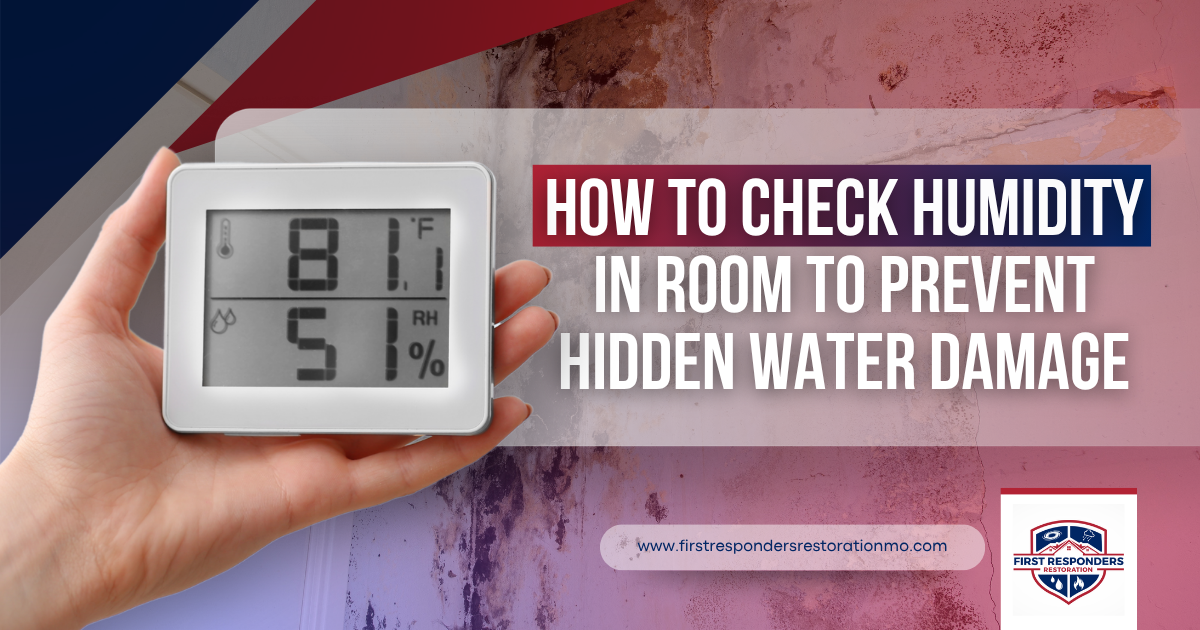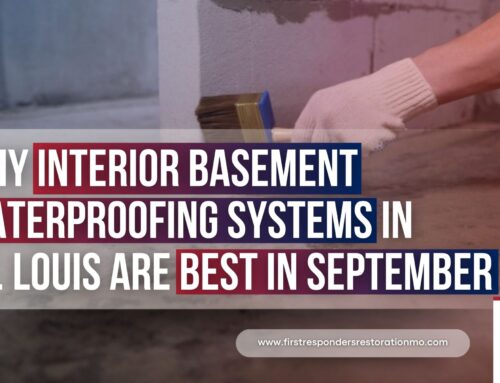St Louis Water Restoration: Why Checking Indoor Humidity Can Save You Thousands
Ever wonder if the humidity in your home could be causing damage you can’t see? Just because everything looks dry doesn’t mean your property is in the clear. High humidity, especially during St. Louis summers and rainy spells, can slowly create hidden issues inside walls, ceilings, and furniture. Over time, that moisture buildup can lead to mold, decay, and costly repairs. That’s why St Louis water restoration experts always recommend checking your home’s humidity levels. Catching the problem early can save you a lot of trouble and money down the road.
Why High Humidity Matters
Humidity refers to the amount of water vapor in the air. While some humidity is normal and necessary for comfort, too much of it indoors can spell trouble. When relative humidity exceeds 60%, it can begin to settle into building materials—drywall, insulation, wooden framing, causing damage you won’t see until it’s extensive. That’s why learning how to monitor and manage indoor humidity is essential for every homeowner and restoration professional. It can prevent slow-building problems like mold growth, decay, and musty odors that affect health, comfort, and property value.
Learn more about our comprehensive approach to water damage restoration in St. Louis
How High Humidity Can Lead to Hidden Water Damage
Humidity doesn’t need to come from a broken pipe or flood to cause damage. When the air inside a home or building holds too much moisture, it begins to affect anything that can absorb it like drywall, wood, carpet, and insulation. These materials act like sponges, soaking up moisture silently over time. This damp environment becomes a perfect breeding ground for mold and mildew.
In the long run, structural elements weaken, finishes degrade, and air quality suffers. What starts as a “sticky” or “musty” feeling inside your home can quickly turn into warped hardwood floors, peeling wallpaper, rusted fixtures, or black spots on ceilings and corners. Because this damage builds slowly and out of view, it’s often not noticed until it’s too late. This is why proactive humidity management is just as important as fixing a leak, if not more.
Explore water damage restoration services to address hidden humidity issues
How Humidity Causes Hidden Water Damage
What Is Humidity Doing Inside Your Home?
Humidity is essentially water vapor suspended in the air. When indoor humidity is high, porous materials like wood, fabric, insulation, and drywall absorb this moisture. This absorption doesn’t just create damp conditions. It kickstarts a chain reaction of problems:
Even without visible signs, hidden damage can accumulate quietly eroding the health and safety of your home.

Even without visible signs, hidden damage can accumulate—quietly eroding the health and safety of your home.
Refer to the EPA’s guidance on acceptable indoor humidity levels
Real Stories That Show How It Happens
In a Home:
One homeowner in a humid climate noticed a musty smell after a long summer. Though there were no visible leaks, mold had taken hold behind the living room walls. The cause? Poor ventilation in the crawlspace below the home. Moist air rose, settled in insulation, and began a quiet cycle of deterioration. A water damage restoration team was able to isolate the source, remove mold-infested material, and install a better airflow system to prevent future buildup.
Read how First Responders Restoration handles mold prevention after spring storms
In an Office:
A mid-sized business experienced sagging ceiling tiles and peeling wall panels in their conference room. The problem was traced to an HVAC unit that wasn’t properly regulating humidity. While the air temperature was cool, moisture levels were too high. Within weeks, condensation had soaked the ceiling tiles and created mold behind the walls. Commercial restoration specialists stepped in, replacing affected materials and upgrading the HVAC system for better humidity control.
Easy Ways to Prevent Humidity Damage (Now with Clear Explanations)
How FRR Helps Fight Humidity Damage
Our Services:
Our team at First Responders Restoration (FRR) specializes in moisture management and long-term structural protection. We don’t just clean up visible damage, we trace hidden moisture, improve ventilation, and restore compromised materials. Whether it’s caused by a flood, high humidity, or a combination of both, our certified technicians use cutting-edge tools to return your property to a safe, dry state.








Leave A Comment